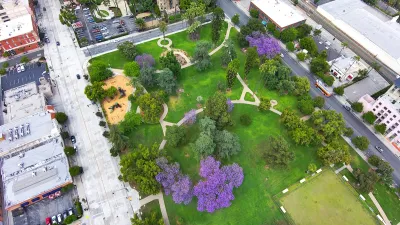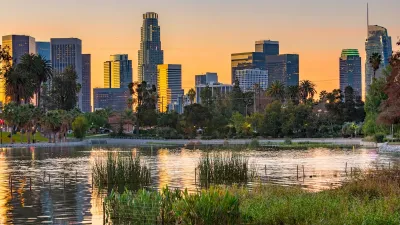When people think of Moscow, they're unlikely to envision lush green landscapes. But over the last two decades, thanks to a burgeoning environmental movement, the city has rapidly expanded its protected green space.
Sveta Samsonova provides a brief outline of the history, current state, and future prospects for Moscow's protected green spaces. "Precursors of today's protected areas have existed since the 16th century," she explains, "when some territories were placed under special protection by the royal family and nobility as hunting grounds and private estates."
Although a greenbelt around the city limits and ring of parks around the city center were established in Moscow's 1935 General Plan, "construction of factories, residential areas and roads significantly reduced the amount of green space in and around Moscow," from 1940-1980.
However, following mass protests in the late 1980s, "[t]he Moscow Soviet of People's Deputies (Mossovet) decided to set up a system of protected areas, and the second (Bitsa Park) appeared in 1992. Since then, the network has increased substantially. In 2004, the municipal government approved a plan for the 'Development and Management of Protected Areas in Moscow' with a list of existing and planned sites up to the year 2025."
FULL STORY: Protected Landscapes in Moscow

Alabama: Trump Terminates Settlements for Black Communities Harmed By Raw Sewage
Trump deemed the landmark civil rights agreement “illegal DEI and environmental justice policy.”

Study: Maui’s Plan to Convert Vacation Rentals to Long-Term Housing Could Cause Nearly $1 Billion Economic Loss
The plan would reduce visitor accommodation by 25% resulting in 1,900 jobs lost.

Planetizen Federal Action Tracker
A weekly monitor of how Trump’s orders and actions are impacting planners and planning in America.

Wind Energy on the Rise Despite Federal Policy Reversal
The Trump administration is revoking federal support for renewable energy, but demand for new projects continues unabated.

Passengers Flock to Caltrain After Electrification
The new electric trains are running faster and more reliably, leading to strong ridership growth on the Bay Area rail system.

Texas Churches Rally Behind ‘Yes in God’s Back Yard’ Legislation
Religious leaders want the state to reduce zoning regulations to streamline leasing church-owned land to housing developers.
Urban Design for Planners 1: Software Tools
This six-course series explores essential urban design concepts using open source software and equips planners with the tools they need to participate fully in the urban design process.
Planning for Universal Design
Learn the tools for implementing Universal Design in planning regulations.
Caltrans
Smith Gee Studio
Institute for Housing and Urban Development Studies (IHS)
City of Grandview
Harvard GSD Executive Education
Toledo-Lucas County Plan Commissions
Salt Lake City
NYU Wagner Graduate School of Public Service





























